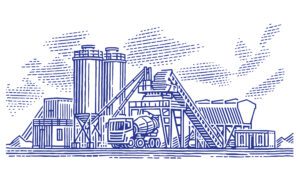What Will Drive Key Business Decisions in 2020 for Industrial Companies?
With the dawn of a new decade, it’s humbling to reflect on how much the industrial world has changed in the last one. “Digital” is no longer a buzzword. Visionary companies know that the time truly is now to take those foundational steps toward becoming a digital-first enterprise across the value chain, and that important “quick win” progress – like providing modern digital tools for their workers on the plant floor or in the field – is a fundamental part of any meaningful digital transformation initiative.
As I think back to the thousands of conversations and meetings I’ve had with our customers and with the leadership teams at the world’s largest industrial companies, a few key trends have emerged that I believe will shape strategic priorities in 2020 and beyond:
#1: Industrial companies will raise the priority of capturing human activity data to improve productivity, quality and safety, opening up new opportunities to apply machine learning
For years, the concept of machine learning was aimed at using algorithms and statistical models to identify patterns and make decisions with minimal human intervention. In industrial environments, a key first step of the journey has been to digitize paper-based standard operating procedures in order to collect data. After that comes data analysis – with an aim to answer and understand “what happened” – followed next by looking into “why it happened” and “how it happened” in order to start identifying trends and predict future behavior.
A new way that industrial companies are applying machine learning – and that we will see more of in 2020 – will be the interaction and exchange of human activity data with “intelligent” machines and platforms, so that human behavior informs prescriptive next-best actions. According to PwC, manufacturers’ adoption of machine learning and analytics to improve predictive maintenance will increase 38% by 2022 – that’s two short years from now. For example, in a manufacturing environment, if an operator performs an intervention due to an error code, machine learning can validate the intervention against the error code and use that human activity data to not only self-learn and identify new patterns over time, but actually suggest the optimal intervention the operator should make.
(Read more: How Connected Work Enables Real Human-Machine Collaboration)
#2: Sustainability across the value chain will be a key driver in technology decisions; improving operational efficiency and limiting waste will be mandatory
The theme of the World Economic Forum’s 50th annual meeting in Davos this January is “Stakeholders for a Cohesive and Sustainable World,” a big indication that we need to stop paying lip-service to sustainability and actually make consequential commitments toward it, including technology. Organizations large and small will be held accountable to maintain sustainability from customers, investors, partners and the general public, who increasingly see it as the mark of a trustworthy company. Take heed of the McDonald’s example from earlier this summer, when a viral Change.org petition provoked the fast food giant to announce it would reduce the amount of plastic used in Happy Meal toys and increase sustainability in a number of other areas.
Those who don’t prioritize sustainability as a business mandate now will face new heights of public scrutiny – at potentially fast and furious speeds fueled by social media, like the McDonald’s incident – and have partners rethinking their relationships.
Companies must ask: How are the investments we’re making in technology contributing toward the reduction of waste and preservation of resources, whether that’s material and tangible, like water, or intangible, like time? How can we re-imagine the way we operate and produce in order to be more sustainable? Case in point: Zume is developing technology to help food brands better predict demand, move them closer to customers to improve efficiency, and reduce waste down the food supply chain, including packaging.
#3: “Batch of one” will truly become the norm in manufacturing as consumers demand choice, and manufacturers must respond by rapidly deploying agile, mobile-first Connected Worker platforms
Shifting consumer demands will put brands under breaking-point pressure to address niche markets and preferences faster than ever, as on-demand expectations grow and companies get closer to their customers, gaining greater visibility into their needs and wants. Take the rise of bespoke health and beauty companies that entered the mass market in 2019 – start-ups such as Prose, providing custom-blended hair products; Care/of, selling customized nutritional supplements; and Curology, mixing custom skincare formulations – using technology and data to create a person’s ideal product based on their needs. But they then pass that pressure on to their suppliers, who must manufacture a far greater variety of products at speed.
Many manufacturers still have equipment and processes that aren’t necessarily designed to handle such variability.
In 2020, manufacturing and operational leaders can no longer push this off as a future problem. Manufacturers must be much more agile than they are today, with the ability to change when, where and for how long they manufacture a product. They’ll need to address how to handle quicker transitions between production runs, with line changeovers becoming a continuous exercise and, as a result, an increasing potential for equipment malfunction, safety incidents and deviations from standard operating procedures.
(Read more: SKU Expansion is Here to Stay: How to Make it a Winning Strategy)
#4: Safety really becomes a C-suite issue, as the correlation of safety to quality and overall operational efficiency becomes increasingly clear
Recent media coverage and scrutiny about Amazon’s high worker injury rate – 9.6 serious injuries per 100 full-time workers, compared to the industry average of four per 100 – has made workplace hazards and safety a front-page issue; it’s hardly surprising that the e-commerce giant’s slate of holiday-timed recruitment adverts portraying it as a wonderful place to work has been met with many raised eyebrows.
It’s increasingly clear that worker safety isn’t only a holiday issue, and only something that affects seasonal, temporary workers. While workplace safety should always be a top priority for chief officers, it will reach new heights in 2020, not just in fulfillment but in a broader set of industries including manufacturing, field service and healthcare. Expect more attention on safety culture, worker protection and regulations as the impact of safety on quality and efficiency becomes too high for C-level executives to delegate. Setting the tone from the top down for their companies, the C-suite will demand greater transparency and proactivity to enforce and improve worker safety, including investment in technology.
(Read more: 3 Ways Technology Improves Safety Management and Procedural Adherence)
There’s no doubt that the ’20s will bring on plenty of innovation, many that will be driven by a renewed sense of urgency around human activity data, manufacturing agility, sustainability and safety. Exciting times are ahead, and I – along with everyone at Parsable – am thrilled to be a part of this pivotal decade for the industrial world.






